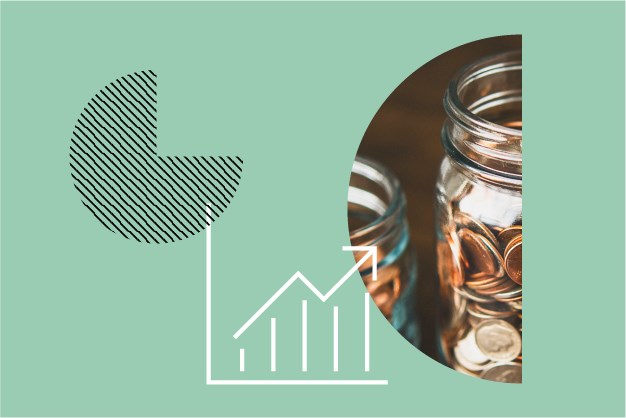
Rising yields and rising inflation expectations are making bond investors nervous. So, let's try to bring some order to a sometimes hectic debate and show why safe bonds are important even in times of low yields.
"I used to think the perfect reincarnation would be to be reborn as a president or a pope. Or as a star baseball hitter. But today, I would be reincarnated as the bond market: You can intimidate anyone."
This bon mot of James Carvill, an advisor to the Clinton administration, has more than just a grain of truth to it. If a crisis hits the bond market, even the biggest stock losses fade. Bond crashes often have a systemic component. The core of the Great Financial Crisis was a debt crisis, even if immense equity losses are more enduring in our memories. And when the U.S. Treasury market faltered and liquidity problems emerged amid the Coronavirus Crash in March 2020, it was a much bigger alarm signal for professional investors than the losses suffered by TSX, S&P 500 and co.
Even today, concerns about the overvaluation of individual stocks such as Tesla or individual market segments such as cloud computing companies are paling in the face of rising bond market yields.
Bond yields are picking up around the world. In the U.S., ten-year government bond yields rose from 1.0 percent to 1.7 percent in less than two months. In Canada, ten-year Treasuries nearly doubled - going from around 0.80 percent to 1.5 percent in the same time span.
As yields move in an inverse relationship to prices, many bond investors have suffered losses in recent weeks. Investors in the Canadian Long Term Fixed Income category have suffered average losses of more than 11 percent since the beginning of the year. One long term federal bond fund lost more than 13% as of March 29, 2021.
How Serious Is the Situation in the Bond Market?
Is the writing on the wall? Is a bond crash so long written up by doomsday prophets for so long? We don't know, of course, but it does not seem very likely. Investors, however, must make a decision based on their personal investment situation and risk appetite; but please do so based on facts.
First, it is important to emphasize that it is perfectly normal for safe bond yields to rise in times of economic recovery. Investors take risks and buy equities in view of the prospect of rising economic activity, which means more consumption, more investment and rising corporate profits. In return, they sell safe government bonds. Today, the global economy is on the verge of a decent recovery after the Coronavirus crisis.
This constellation usually spells only a temporary setback for bonds, which long-term investors should sit out. Especially since the central banks show no signs of tightening their extremely loose monetary policy. The U.S. Fed has probably given the clearest signal here. The Fed is assuming an average target inflation level of two percent. So it will not be the case that the Fed will tighten monetary policy as soon as inflation in the U.S. reaches the two percent threshold. Rather, it will tolerate a crossing of the two percent mark until it believes that the previous low-inflation phases are now "balanced out." Until then, interest rates in the U.S. will remain close to zero, and the central bank will continue to buy bonds on the secondary market on a large scale.
Little Sign of Galloping Inflation in the Short and Medium Term
The situation is no different in the eurozone, the UK and Japan, where the Bank of Japan has even been explicitly issuing target yields (yield control) for longer-dated paper since 2016.
And what if inflation runs away from central banks and they lose control? Again, we don't know. But there are good reasons not to bet on a sustained return of inflation. In the short term, rising energy prices are primarily responsible for the jump in inflation: In the spring of 2020, oil prices had collapsed. This base effect is largely responsible for driving up inflation rates.
But even in the longer term, there is little to suggest that inflation will return. Societies in the industrialized countries are inevitably aging, which argues for more saving and less consumption. Technological progress and digitalization are continuing at a relentless pace, which should tend to produce disinflationary effects. In addition, the fiscal policies of today's big-spending governments are likely to be less expansionary in the short to medium term, and so the risk of runaway inflation and a sell-off in the bond market seems unlikely.
And What Does This Mean for Investors?
Investors who adhere to the plausible-sounding scenario of a temporary bond correction can relax. Prices should quickly stabilize again - just as they did during the yield spikes in 2013 and 2016. (Pessimistic investors will object that we have not experienced a bond crash in the past 40 years and therefore do not know what a bond crash looks like. Point taken. But do remember that even during the U.S. bond crisis of 1977 to 1980, the price of the benchmark ten-year U.S. bonds did not fall by more than three percent (1980) in any year).
However, investors must now make a sober calculation: They must come to terms with the idea that yields will remain at a low level. The yield level of a bond provides clarity on the expected returns for new investors. Currently, medium-term bonds across the world are issued with zero or even negative interest rates.
Direct Investors Are Immunized From Duration Risks
Existing investors who have made a direct investment in bonds are on the safe side. At the beginning of their investment, they logged into the risk premia they considered sufficiently attractive. In this respect, buy-and-hold investors are immunized against duration risks. They collect their coupons every year and get the 100 euros back at the end of the term. Direct investors might look for new investments with longer maturities that offer higher coupons - the 100-year bond from Austria could possibly be inherited to your children and their children?
Investors in bond funds or bond ETFs, on the other hand, are not immune to price depreciation because many have invested in vehicles with more or less fixed residual maturities. Price hits here can take their toll on fund investors. Even if no crash is imminent, they may have to contend with taking losses for quite some time. Indirect bond investment via funds can therefore have disadvantages compared with direct investments.
However, both direct bond investors and bond investors via funds or ETFs can look at inflation-protected securities. There are bonds whose interest payments are linked to the general price trend. So if you're uncomfortable with today's inflation levels or don't expect prices to fall, you can hedge your bond investment in this way.




















